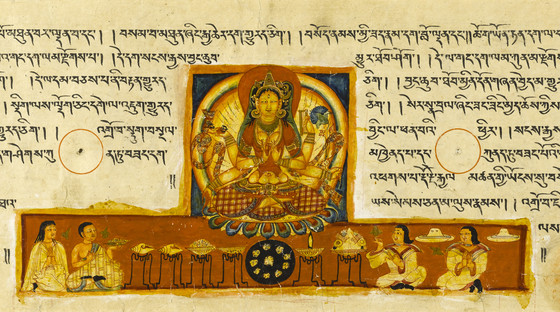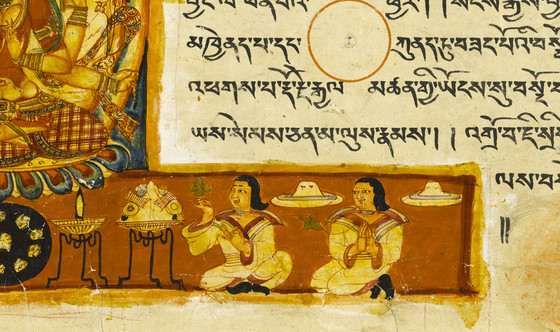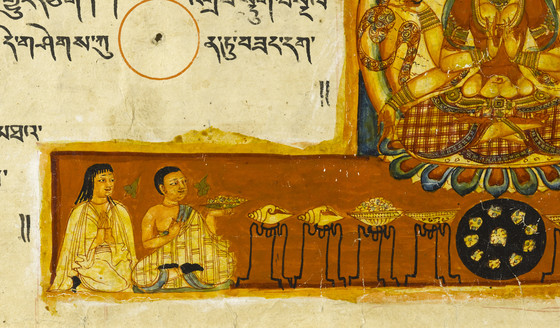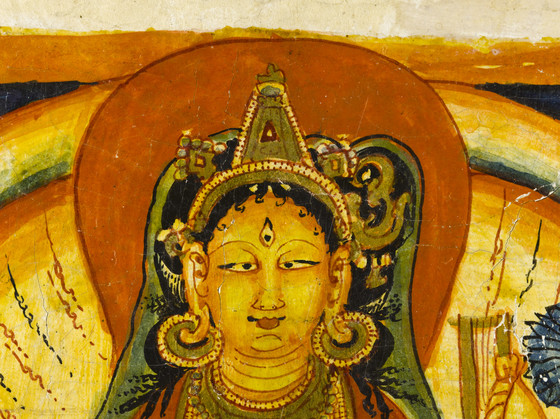Prajnaparamita with Devotees, Folio from a Shatasahasrika Prajnaparamita (The Perfection of Wisdom in 100,000 Verses)






Please log in to add this item to your gallery.
View comments
No comments have been posted yet.
Add a comment
Please log in to add comments.
Please log in to add tags.
* Nearly 20,000 images of artworks the museum believes to be in the public domain are available to download on this site.
Other images may be protected by copyright and other intellectual property rights.
By using any of these images you agree to LACMA's Terms of Use.
Prajnaparamita with Devotees, Folio from a Shatasahasrika Prajnaparamita (The Perfection of Wisdom in 100,000 Verses)
Western Tibet, Maryul district, Tholing Monastery, 11th century
Manuscripts
Ink, opaque watercolor, and gold on paper
Illustration: 4 7/8 x 10 3/4 in. (27.3 x 12.4 cm); Folio: 7 1/2 x 26 1/8 in. (19. x 66.3 cm)
From the Nasli and Alice Heeramaneck Collection, purchased with funds provided by the Jane and Justin Dart Foundation (M.81.90.6)
Not currently on public view


